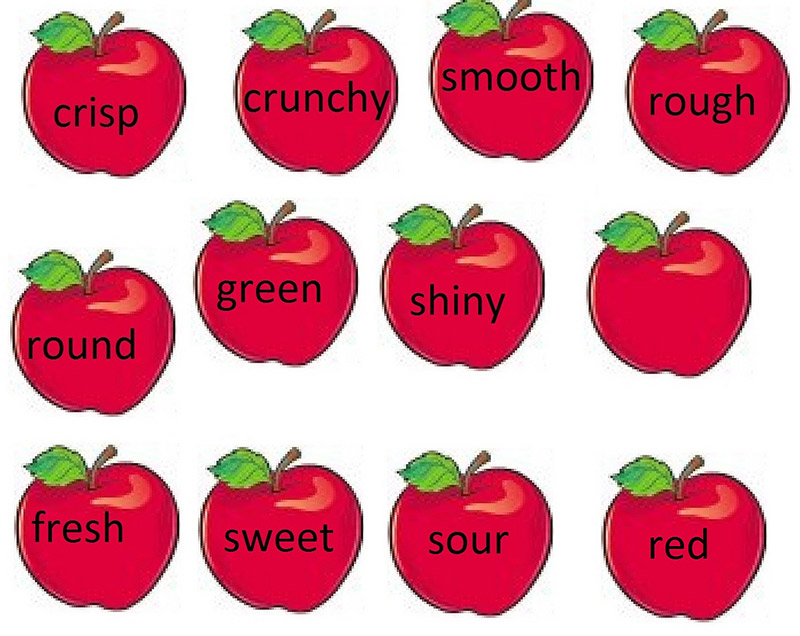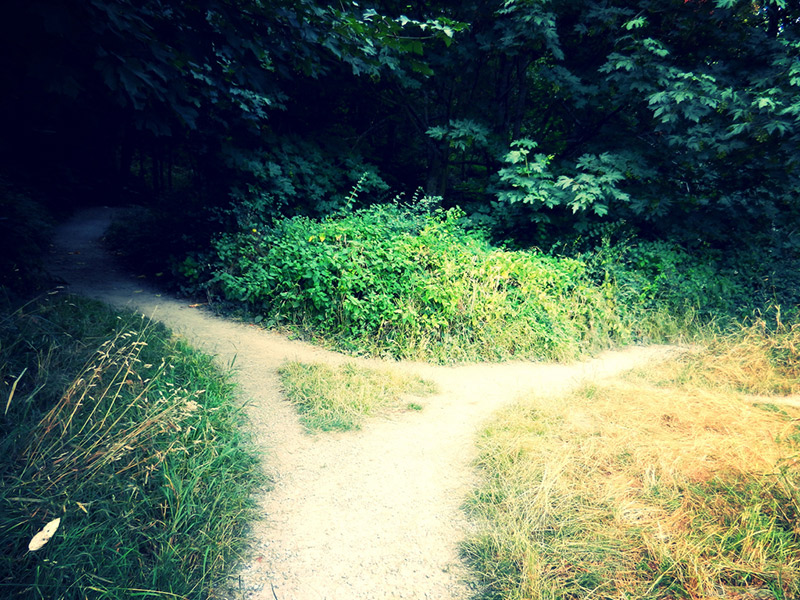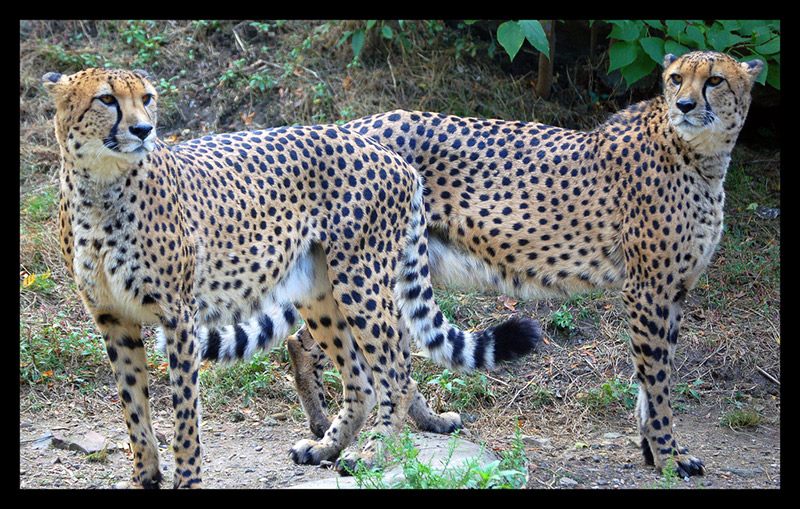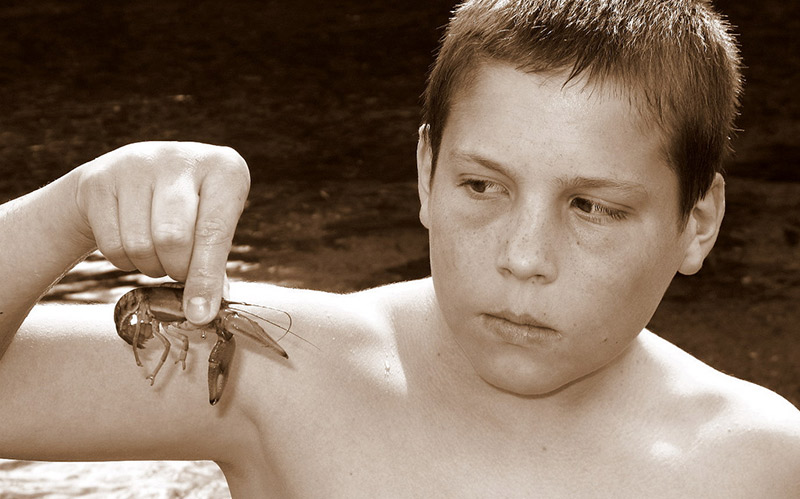In Tokyo, you can rarely walk along a street, turn left four times and arrive on the same street you started on. Like Edo roads, Kobun conjugations do not form expected paths. We've gone over most of the winding alleys already in Parts 2 & 3, using the translation tour guide that is Part 1. And while there is one more mile marker after this (Kobun honorifics), I'm wrapping up the most confusing of conjugations and sentence endings in Classical Japanese with an outline of the rule breakers: adjectives and musubi.
An Adjective by Any Other Name

Adjectives describe nouns, right? My favorite Kobun scholar, Vovin, actually calls Kobun adjectives "quality verbs." The "quality" part points at how these gems ascribe quality in a sentence ("the stupid jellyfish), not action ("The jellyfish cooked). In "quality verb," then, the "verb" part describes Kobun adjectives in form; unlike nouns (私) or particles (は), adjectives are dynamic and flexible in shape.
Modern Japanese adjectives aren't all so dynamic. Na-adjectives, like しずか, come in one form that only changes in what particles it attaches to. But i-adjectives are dynamic with interior changes similar to Kobun ones.
The Two Adjective Types

Again, like Modern, there are two Kobun adjective types, which isn't bad compared to the nine verb categories. These two types, ku- and shiku-adjectives, only really appear in three forms: Renyoukei, Shuushikei, and Rentaikei.
Ku-Adjectives (く活用形容詞)
Renyou: __く (赤く, "red")
Shuushi: __し (赤し)
Rentai: __き (赤き)
Izen*: __け (赤け)
Kobun: 「白き鳥の 嘴と 脚とあかき」(From Ise Monogatari)
Modern: 白い鳥であって、くちばしと脚とが赤い(鳥)。
English: It was a white bird with a red beak and red feet. (My translation)
*Occasionally adjectives appear in the Izenkei as well. For more adjectival enlightenment, see Kafka-fuura's in-depth page or this page (Japanese, but more examples), and like all Kobun elements, it can't hurt to peek in a dictionary.
Shiku Adjectives (しく活用形容詞)
Renyou: __しく (を**かしく, "strange", "interesting", "awesome")
Shuushi: __し(をかし)
Rentai: __しき(をかしき)
Izen: __しき(をかしき)
**Yes, spellings like this are abound in Kobun. There are guides, like Kafka's page, which describe the crazy writing conventions and spelling in Kobun. Pay attention to the existence of two characters/sounds Modern lacks: ゐ (wi) and ゑ (we). If any of your teachers ever cautioned you against getting creative when scrawling "る", now you can see why.
The "Verbal Adjectives"

Alas, Kobun is not simple. There are two other adjective types lumped into a category of Keiyou-doushi 形容動詞. Unlike ku- and shiku-adjectives, these overachievers appear in all the forms verbs can except the Meireikei (command form). I think of these as similar to Modern na-adjectives because the base part of the word doesn't change – there's nari and tari at the end, and those are kind of jodoushi already.
Vovin, in fact, posits the nari, tari, and occasional kari that follow the base of adjectives like shidzuka 静か (quiet) are definitely just adjective + jodoushi and thus naturally end like jodoushi. The traditional dictionaries call 静けし a ku-adjective and 静かなり a nari-adjective, but 静かなり just looks like 静けし in an altered form (ka) to connect to -nari. However it helps you to look at them, here are those nari and tari endings for you:
Nari Conjugation (ナリ活用)
Mizen: __なら (静かなら, "quiet")
Renyou: __に・なり (静かなり・に)
Shuushi: __なり (静かなり)
Rentai: __なる (静かなる)
Izen: __なれ (静かなれ)
Tari Conjugation (タリ活用)
Mizen: __たら (堂々たら, だうだうたら "austere", "magnificent", or "elegant")
Renyou: __たり or と (堂々たり・と)
Shuushi: __たり (堂々たり)
Rentai: __たる (堂々たる)
Izen: __たれ (堂々たれ)
Believe it or not, it's actually kind of hard to find examples of adjectives in text, at least flipping through the poetry of the Kokin Wakashuu. There are experts that write about this stuff, but I'm personally wondering if it might have been an aesthetic or rhetorical technique to use noun phrases and verbs more than the Keiyoushi or Keiyoudoushi above. Or perhaps it just worked better for the rhyme scheme to use "noun + の". For example:
Kobun: Haru no yo no/ yami wa ayanashi/ ume no hana/ iro koso miene/ ka ya wa kakururu. (From Kokin Wakashuu)
English: "How foolish is the darkness on this spring night – though it conceals the plum blossoms' charm and color it cannot hide their perfume" (Rodd & Henkenius 60).
Kakari-Musubi

- "Cheetahs run very fast." Good!
- "Cheetahs runs very fast." Not grammatical!
1 and 2 above demonstrate a language feature of English called subject-verb agreement. Classical Japanese had its own "agreement" parameters to be met, which writers were more or less second nature to Classical writers. Unfortunately, this means some unexpected sentence or clause endings. Instead of agreement being based on plurality, it was based on particles. These four make up the kakari-musubi set:
- ぞ (emphatic, anxiety)
- なむ (emphatic)
- や (doubt, question)
- か (doubt, question)
Motoori Norinaga first described this phenomenon in 1779. He was determined Japan had the best old language, that there was something divine and magical in the old words, and that only by getting away from the Chinese style of literature and all that on-yomi could Japan become stronger. If you're thinking this sounds like the seedling of the empire-building nationalism of the late 1800's, you'd be right. It happened around the world, actually.
Norinaga called the Kobun particle-verb agreement kakari-musubi 係り結び using the characters for "connect" and "tie/bind."
There is one other type of musubi, but I'll get to that after illuminating the kakari-musubi.
The Rentai-Bully Particles

Musubi would be like ball lightning if the phenomena was more common. That is, musubi have scientifically observable patterns, but they still skew our view of the sentence. Musubi are also like bullies. We've actually seen them before; I included this example in Kobun Part 3:
Kobun: 「雪降れば木 毎に花ぞ咲きにけるいづれを梅と分きて折らまし」
English: "After the snowfall, flowers have burst into bloom on every tree. How am I to find the plum and break off a laden bough?" (Kokin Wakashu 81).
The presence of the particle ぞ forces ける into the Rentai (attributive) form. Since I personally wouldn't question the attributive being in that spot in the sentence (though the Renyoukei might make more sense), I'll explain through a clearer example:
何事をかは中納言にはつたへならはすべき "[W]hat thing should [we] entrust to the Chunagon?" (Vovin 209)
Normally, sentences end with the Shuushikei, right? But the Shuushikei of that final jodoushi is actually べし, while what we see above is べき, the Rentaikei (attributive). This is a case where the sentence ends in the rentaikei because of the presence of a musubi. So when you're checking charts to see if the ending verb or jodoushi is what you think it is, take this into account.
That said, there are some non-musubi occasions for the sentence to end in the rentaikei, which I've cautioned about in the past Kobun articles. According to Vovin, this trend was, at first, only in 11th century recorded dialogue; the narratives of Kobun texts avoided Rentaikei-ended sentences. Over time, however, the trend was adopted into narratives, as well.
Pay attention to what you're reading. If you're reading something on the earlier scale of Classical texts, you'll be okay just keeping an eye out for musubi. If you're reading, say, the lyrics to a folk song from the Edo period or maybe even the Tsuresuregusa (14th century), there might not be a musubi around when a sentence ends in the rentaikei.
The Koso Musubi

One other musubi should be noted, and it forces the Izenkei. If you don't remember, the Izenkei indicates started or even completed actions (not "past tense" or "end of sentence") and usually pairs up with ~ば for "since" or "when".
When こそ is used, the Izenkei form seems out of place in the middle of the sentence with no ~ば. In this example of the koso-musubi, what Shirane calls a "concessive" (49) is what the rest of us would translate as "though" or "but". For example:
Kobun: こまかにこそあらねどときどきものいひをこせけり (From Ise Monogatari)
English: "[he] sometimes sent [her] messages, although [they] were not cordial" (Vovin 214)
The あらね is 有り (to be) + ず (neg.) in the Izenkei. After that, the ど you see is a particle of contradiction ("although" or "despite…").
In other instances, こそ will force the last verb or jodoushi into the Izenkei as a word of emphasis.
Kobun: 折節(を理節)の 移りかはるこそ、ものごとに 哀なれ.(From Tsurezuregusa)
English: "It is precisely the changing of the seasons that makes everything so moving" (Shirane 49, italics his).
You should know koso from the modern, but if you need a refresher, Vovin remarks that, "koso seems to place especially strong emphasis on a preceding word or phrase, much stronger than the [Kobun] particles zo and namu" (430).
If you're wondering, "What on earth do I do if I see koso and zo, etc. in the same sentence?" then Vovin's got you fixed there, too, for almost every instance: "the form of the final predicate is defined by the particle that comes closest to the final predicate" (214).
The End of the Road?

That might not have been quite as easy breezy as jodoushi were, but then, I just taught you how to disarm Kobun bombs that would otherwise destroy your attempts at translation. Plus, Classical Japanese adjectives look so similar to modern ones, don't they? You'll probably understand them as you see them in texts without needing to look them up. Plus, when you think about the "core" meanings in the musubi gang, the only new particles are namu and ya.
So yes, that's it: four adjective types, which mostly overlap in the ending sounds, and five agressive particles. If you've got questions, hit us up on Twitter. Ask away! Otherwise, get ready for the next and probably last Kobun post: Classical Japanese Honorifics.
